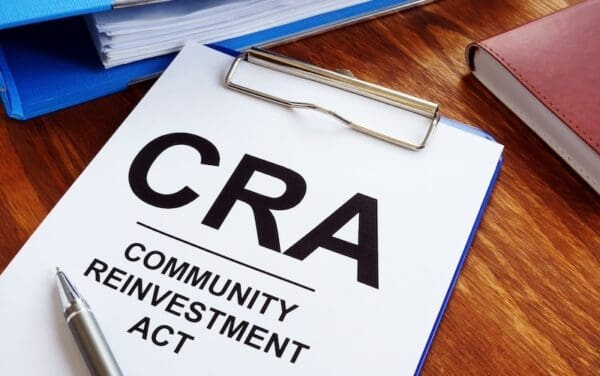
Where you live has a profound impact on your health and well-being. In Boston alone, residents of Roxbury have an average life expectancy of 59 years, compared to 92 years for Back Bay residents. CLF and Boston Medical Center are working together to try to change that math. Photo: Marco Rubino via Shutterstock
When Dr. Megan Sandel talks about the connections between health and housing, one patient, in particular, stands out. “I was treating a cute two-year-old who hadn’t outgrown his 12-month clothes,” she says. “I ordered expensive tests and nutritional supplements that had no impact week after week.”
Then, all of a sudden, the child started growing. She came to learn that the family had been on an affordable housing list and were now living in stable housing that reduced the chaos of his previous living situation. “Stable, affordable housing was the prescription, and this isn’t stocked at the pharmacy,” she says.
In the years since treating that toddler, Dr. Sandel, who serves as Associate Director of the GROW Clinic at Boston Medical Center (BMC) as well as Principal Investigator with Children’s HealthWatch, has been working to raise awareness about these vital links between health and home. And she’s not alone. “Increasingly, doctors, community development and neighborhood groups are latching onto the idea that medical solutions aren’t enough to promote good health,” she says. “We have to address the social and economic inequalities that our community members face on a daily basis.”
Studies have shown that where people live has a direct and profound influence on health and well-being. When CLF introduced a new social impact fund designed to help develop neighborhoods that support good health, BMC signed on as a key partner and investor. Most recently, Dr. Sandel joined CLF as a Fellow, working to strengthen partnerships between healthcare systems to promote investment in healthy neighborhoods.
I caught up with Dr. Sandel to talk with her about how we can improve community health by focusing on housing solutions that benefit the entire community.
Why is BMC interested in partnerships involving housing?
BMC’s vision is to make Boston the healthiest population in the world by 2030. But health care, in the medical sense, only addresses about 20 to 30 percent of health outcomes directly.
We recognize that patient care isn’t limited to what happens within the hospital’s physical walls. We have to address the social and economic inequalities that our community members face daily and make sure they have jobs and quality housing to reduce the chronic stress that leads to poor health outcomes. Social and behavioral factors are also powerful determinants of health and are squarely dictated by where we live.
BMC knows that we can’t tackle this issue alone. That’s why the hospital is investing more than $6.5 million in a wide variety of innovative housing partnerships in Boston. We want to study and leverage the best ideas in collaboration with our partners and neighbors.
What is the relationship between quality housing and the health of your patients?
There’s no better predictor of your health than where you live and the circumstances of your neighborhood. For instance, is your housing stable, and can you afford the rent or mortgage without sacrificing food and other essentials? Is your home in a neighborhood that meets your needs? Do you feel safe in your home and can you access decent employment from there? Even though BMC is in the health business, it’s clear to us that all of these aspects of housing, dictated by financial factors and economic systems, are health predictors.
How is BMC’s partnership with CLF supporting the hospital’s vision for a healthier community?
We recognize that the health of the community is driven by affordable housing and strong financial health. We also believe housing stability is a foundational element in addressing poverty, especially the negative health impacts associated with being housing insecure or homeless. That means we need a new set of partners, as these issues are essential for BMC’s core competence as a community anchor institution.
We view CLF as a unique partner on many levels. Through CLF’s groundbreaking work with the Massachusetts Housing Investment Corporation in establishing the Healthy Neighborhoods Equity Fund, you are engaging in innovative investment strategies that combine on-the-ground neighborhood data to identify affordable housing investments that directly benefit community health.
As well, a number of the community-based organizations collaborating in CLF’s Healthy Neighborhoods Study provide essential services for residents who are also patients in our healthcare system. Together, our two organizations can leverage crucial public health and housing solutions.
Why is public health important for an environmental advocacy organization such as CLF?
Just outside of BMC’s emergency room on the edge of Roxbury, we have residents who are experiencing an average life expectancy of 59 years. Just a few miles away is the upscale Back Bay neighborhood where residents average a life expectancy of 92 years. BMC gives great care, but it’s not just about medical care, it’s really about where you live.
CLF, as an environmental advocacy organization, has a vital role to play in messaging that a healthy environment encompasses all the places where we live, work, play, and learn – and when that environment is unhealthy, it has a disproportionate and negative impact on the low- and moderate-income families.
What is your hope for the impact of BMC and CLF’s partnership on community health and wellness?
My audacious wish is that in five years it will be commonplace for health systems to invest regularly, with their community partners, in housing and community/economic development. We’ll think about financing strategies and systems change as part of what’s important for health systems to address for the community.
Find more information on CLF’s Healthy Neighborhoods Fund and the Healthy Neighborhoods Study.




